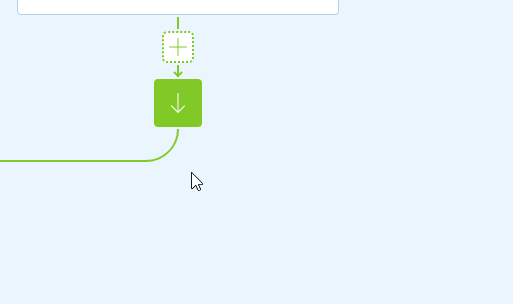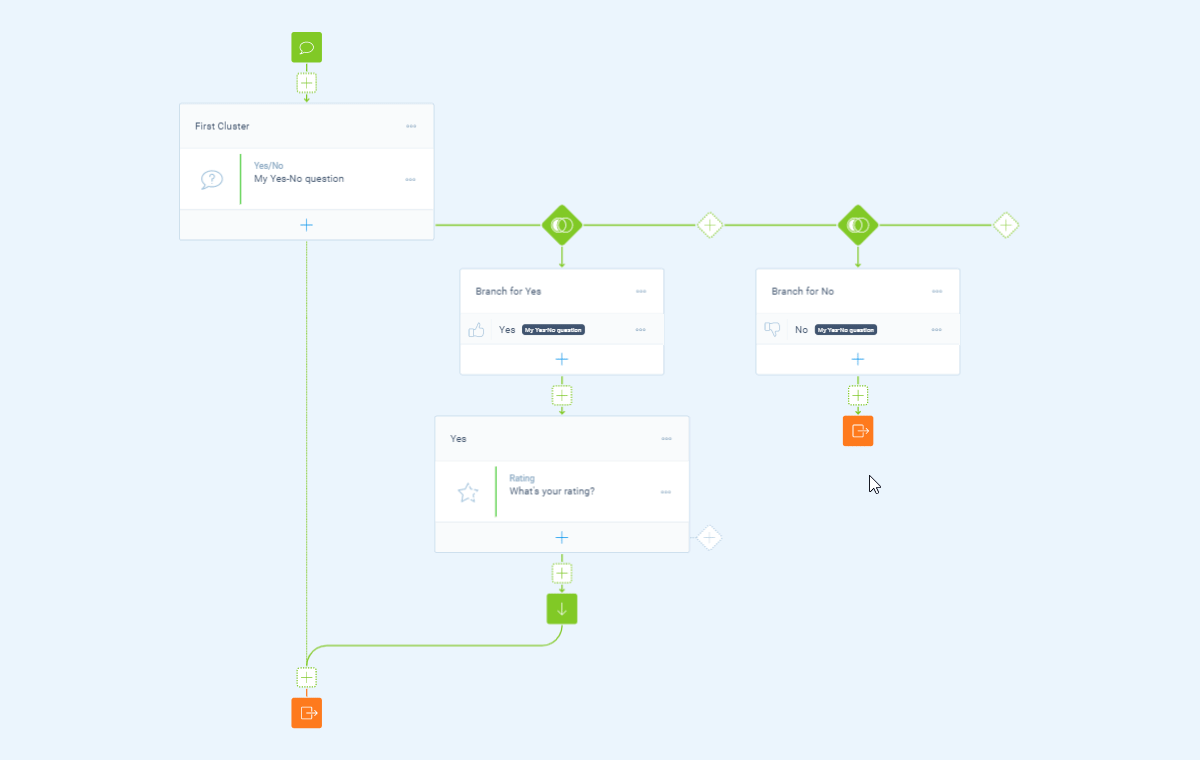Learn about different types of branch endings for your logic
You can determine how each branch should behave at the end of the branch. This will affect how the form continues after the branch, for example to skip to another point, the end, or show a custom closing message.
Branches
In Tripetto you use branches to add the desired logic to your form. In this article we showed how to add branches to your form.
Part of each branch is the branch ending that determines what happens at the end of the branch. Let's take a deeper look into that.
Branch endings
At the end of each branch it's possible to set what should happen after a respondent completes the branch. To do so, you click the green bubble at the bottom of a branch. There are four options:
- Continue with the next section or branch;
- Jump to a specific point;
- Jump to end;
- End with closing message.
Continue with the next section or branch
This is the default branch end behavior. It lets the form determine the first logical continuation and show that to the respondent. Depending on your form's structure that could be the next question block, an action block, the end, etc.
Jump to a specific point

This lets the form jump to a specific section inside your form that you select. This way you can for example skip a few questions and jump to a later point in your form. This article dives deeper into jumping in your form.
Keep in mind you can only jump to sections that are in the future and have a name. So before you setup the jump, make sure you have given a name to the section that you want to jump to.
Jump to end
This lets the form jump to the very end immediately. This will show the common closing message (including the possibility to redirect) to your respondents.
End with closing message
This lets the form end and show a custom closing message (including the possibility to redirect) to your respondents that end the form here.

More about branch logic
Branch logic is very powerful, so we made some different help articles to help you with this:
